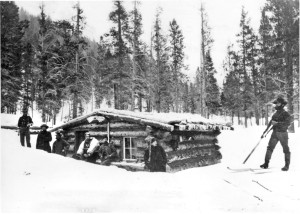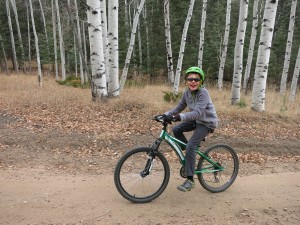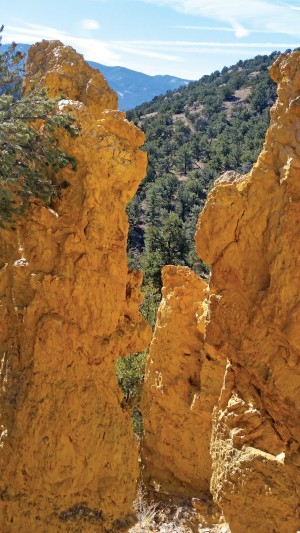THE NATURAL WORLD
By Tina Mitchell
The sun rises later every morning. Night falls earlier each day. You walk the dog before work in pitch black, hoping that the local coyotes aren’t prowling the darkness a few feet behind you. After work, what’s left of the daylight fades fast and you do outdoor tasks in twilight. You stare into the seemingly interminable darkness, morosely remembering the long, lazy, languid evenings of summer. Is that what’s troublin’ ya, friend?
The approaching winter solstice, this year on Dec. 21, brings the shortest day of the year because it features the latest sunrise and the earliest sunset. Right? Well, actually – no. After the winter solstice, total daylight does increase a minute or two every few days. But those of us who mourn the waning sunlight can look to an earlier milepost. In early December – this year, around December 2 in Central Colorado – we’ll experience the earliest sunset of the year. On that date, sunset holds around 4:43 p.m. for almost two weeks; after that, it inches back a minute later every few days.
Unfortunately, it’s not all good news. The sunrise continues to occur later for another month, finally leveling off at 7:22 a.m. around Jan. 2 for roughly 10 days and then slowly creeping a minute earlier every few days. This seesaw between incrementally later sunsets but continuingly later sunrises converges at the winter solstice – the day that indeed has the smallest total number of hours of daylight.
[InContentAdTwo]
Without getting too technical (which I couldn’t do anyway), if the Earth’s orbit around the sun were perfectly circular (which it’s not) and its vertical axis were perfectly upright (which it’s not), the earliest sunset and latest sunrise would indeed both occur on the winter solstice. Instead, the earth’s elliptical orbit (called ellipticity) and axial tilt of 23.5° away from the sun in the Northern Hemisphere these days (called obliquity) work together to create this asymmetry of shifting sunrise and sunset around the solstice.
And speaking of the solstice, you probably know that we have two solstices – winter and summer – where we experience the shortest and longest days of the year, and two equinoxes – vernal (spring) and autumnal – where daylight hours equal darkness hours. These astronomical points are referred to as quarter days, because they divide the year neatly into quarters. But for the Celtic culture, the cross-quarter days – the days mid-way between each of the quarter days – held at least as much importance, marking the beginnings of seasons. We can find remnants of cross-quarter days even today. Ever wonder why Groundhog Day, which promises 6 more weeks of winter if the groundhog sees its shadow, occurs on February 2? That’s a cross-quarter day – approximately six weeks between the winter solstice and the vernal equinox – denoting the beginning of Celtic spring. Why celebrate May Day (May 1)? Again, a cross-quarter day between the vernal equinox and the summer solstice, demarcating the beginning of Celtic summer. Why do many summer fairs, such as the Chaffee and Fremont county fairs, occur in early August? Yep, another cross-quarter day between the summer solstice and the autumnal equinox that signified the beginning of both the harvest (hence, a great time for county fairs) and Celtic autumn. Finally, Halloween falls near the final cross-quarter day between the autumnal equinox and the winter solstice, indicating the beginning of the Celtic winter.
In some ways, I resonate with the dates marking the Celtic seasons even more than our current calendar conventions. For instance, why should summer be declared in late June when it has already been seriously summer-like for weeks? And the start of winter in early November rather than in the already wintry late December makes immense sense to me.
But for now, thank the Earth’s obliquity and ellipticity, turn your face to the setting sun, and take heart in knowing that, at least as of Dec. 2, the darkness will no longer arrive earlier each day. Welcome those few extra minutes of day’s-end daylight with joy and celebration of the soon-to-be-lengthening period of daylight. Time to sing, dance – do whatever – in honor of the returning sunlight!
Tina Mitchell is a research psychologist on the University of Colorado Anschutz Medical Campus in Aurora.




